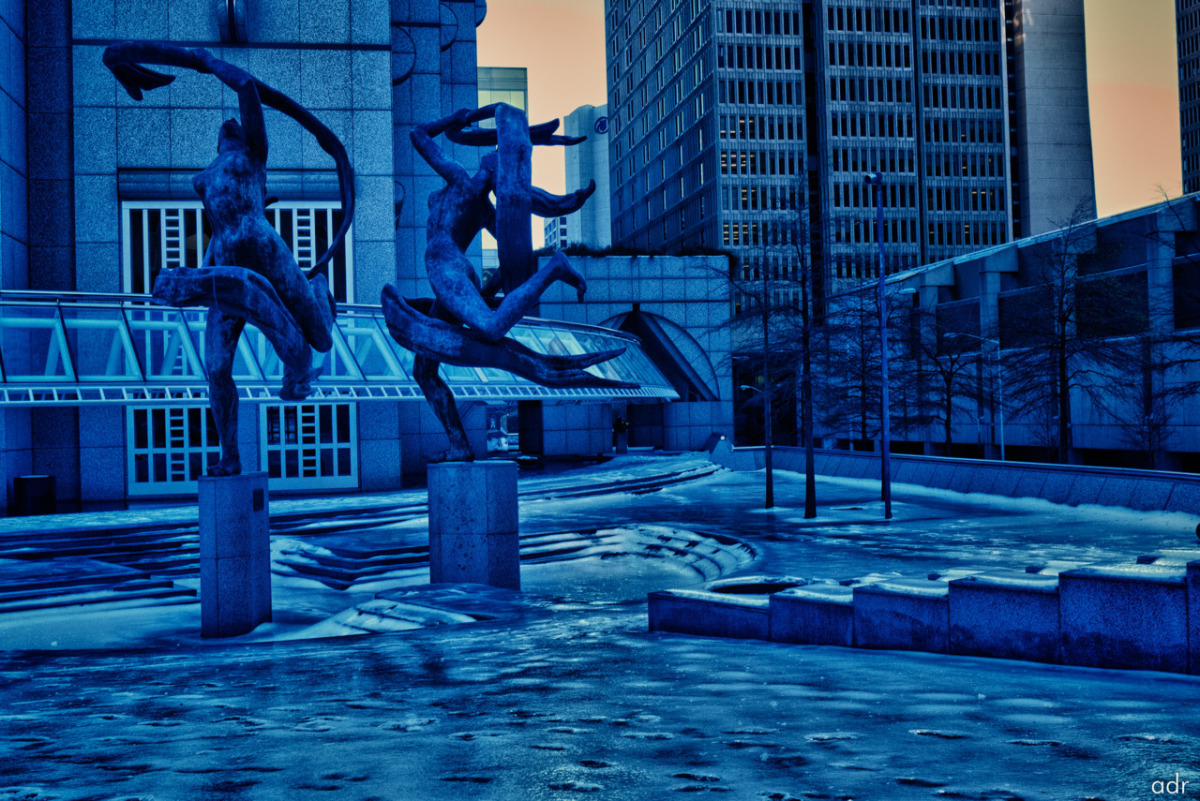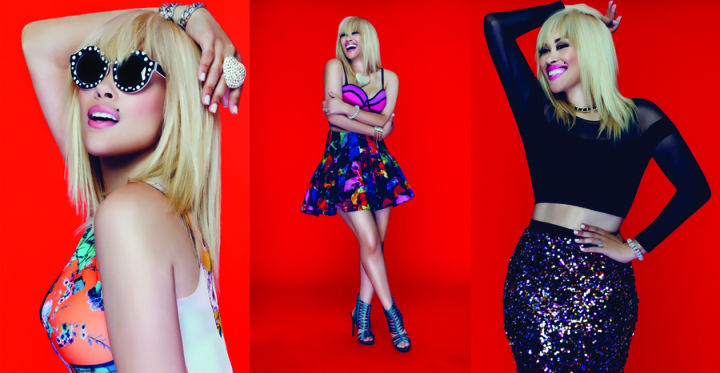
Photographer to Watch: Alex D Rogers
Photographer to Watch: Alex D Rogers, a New York native, is a fashion-style, portrait photographer based in Atlanta. He received a BFA in Multimedia Production and an M.Ed in Instructional Design. He aims to create high quality imagery that is uncompromising, clear in its intent, and artistically sound. Alex hopes to inspire photographers with his work for years to come.
Glappitnova: Thank you, Alex, for agreeing to do this interview with me. I’ve been following your work for, I want to say, a few years now and am impressed with how versatile your eye is. Can you brief us on how you got started in photography and what, if any, plans did you have for your work in the beginning that have since changed?
Alex: Thank you for asking. It’s humbling. I studied video in undergrad and got a job in the field while I was still in school. After a while I did more still work than motion and purchased a camera of my own to be more productive. It was not a conscious decision. So there weren’t any plans in the beginning–in terms of my personal work. My first personal photos were taken at a Janelle Monae concert. I ordered a new camera specifically to shoot a series of shows she was playing in town. I was hooked, then.
G: I think it is important to know that you started in video. I’m not sure from where I read this, or perhaps I am making it up, but there is something about video that seems interested in creating a moment that relates semi-closely to how we experience memory or dream. I like to think that photography does the same thing but at a much slower pace. Even in stillness the story or the object moves. How do you see yourself as using photography to tell a story or to make a moment? I suppose the real question is, why do you take photos?
A: Funny you mention that. Film is 24 pictures every second. Multiply that by 2 hours… For me, the challenge was greater to try and tell a whole story in one frame. And what I loved was that I didn’t need an entire film crew to do it. I still come up with stories like I did for motion picture projects, but the details are a lot more nuanced–if that makes any sense. I just wrapped a shoot with an artist that was more of a portrait “story” than a narrative. We held it together with a theme. That flexibility helps a lot when you can’t use words to tell a story.
My mission, when deciding what to shoot and when shooting, is to create as many amazing photographs of people of color as I can. I keep folders of thousands of visual references that my team and I use to create mood boards when we’re putting concepts together. There aren’t very many black people in that folder. I honestly want to be able to contribute to some sort of balance.
G: So you have a team. What does a team assist you with?
A: Not a dedicated team. I refer to anyone working on the shoot on the creative side as “the team.” My teams tend to consist of hair stylists, makeup artists, wardrobe stylists, clients, and even subjects. Which team members are involved varies based on the shoot. Sometimes (like today) it’s just the subject and myself. Those are my favorite. There’s no fuss about hair, makeup and wardrobe. Some subjects are more comfortable without those distractions. On the other hand, some subjects thrive on it.
G: It’s always great to hear how collaborative so much of this work is, especially when there is a focus on getting more people of color exposure in art, whatever art we love. Being able to see ourselves through the eyes (in your case it’s also the lens) of others seems more and more important nowadays. I think “affirmation” is the word. It feels safe to say that you are affirming the lives of others who are typically overlooked.
I want to talk briefly about some of your early work and much more deeply about your most recent project “iD Sessions”. Let’s start with earlier photos.
What I love about this photo is how you brought so much life to this structure. Props to the artist who sculpted this piece, but you were able to interpret this sculpture in a way that has so much emotional texture to it. Everything from the intense color blue to what looks like a softening of the edges of things. That you included the footprints in the snow gives even more life to this piece. What were you aiming for in this photo? Just tell me everything about this piece haha. It is truly one of my faves.
A: I had been snowed in for about 4 days when I shot this. I went for a walk and this was one of the first things I saw. There’s normally a fountain beneath the sculptures. I thought it looked like they were dancing on a frozen lake. There’s rarely any super deep thought behind what I shoot. I thought it was cool, so I waited for a moment when there weren’t any humans in the frame and I snapped it.
G: I’ll ask an artsy question. Are there really no humans in this photo? It feels as though it is populated. Maybe it is the footprints or the human shapes of the statues, but do you consider yourself as having an imprint on the work that adds a life to the work that would otherwise be absent? How much of your vision would you say is conscious?
A: Earlier on, I would say very little of what I did was based on what I’d consider “vision” today. Today, I might consider the footprints to be some sort of reference to the life that existed before the city was shut down by that ice storm. About 85% of what I do now, in my portrait work, is based on vision. I’m not a fine artist. I do artful things, but my work tends to be more functional.
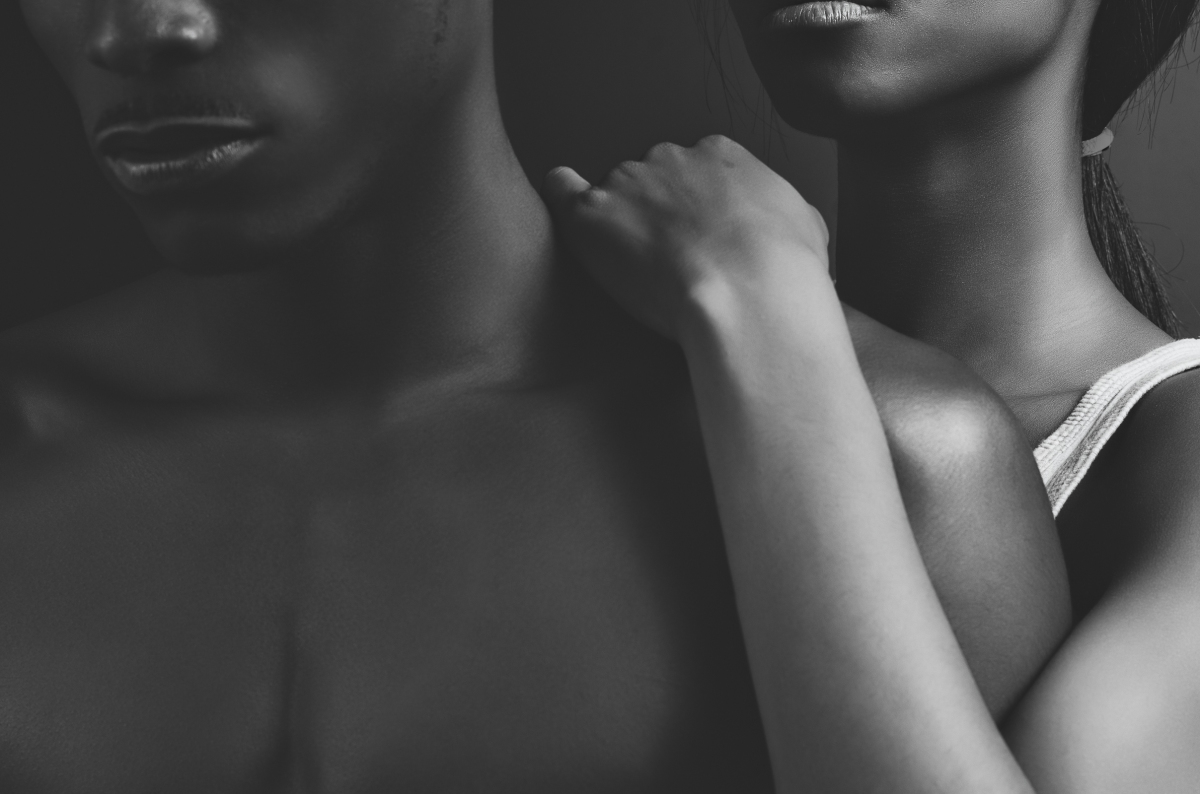
Borrowed Time #4
G: Can you tell us, in as much depth as you like, what inspired the series “Borrowed Time”?
A: That series was inspired by a song called “Borrowed” by LeAnn Rimes. The song is about an experience she went through with a guy she had an affair with (to whom she’s now married). I saw her perform it on a late night talk show and fell in love with it. The next day, I asked two models I’d worked with before to come in for a session. I think the fact that we all knew each other made it easier for them to portray the characters. There was no hair, makeup, or wardrobe. I didn’t want the photos to feel posed or like they were modeling. I didn’t mention the song or the celebrities it was inspired by. My direction was that they both had significant others but were in love with each other. The time they get to spend together was literally borrowed. He’d just gotten a call from his wife and it was time for them to part. Off they went.
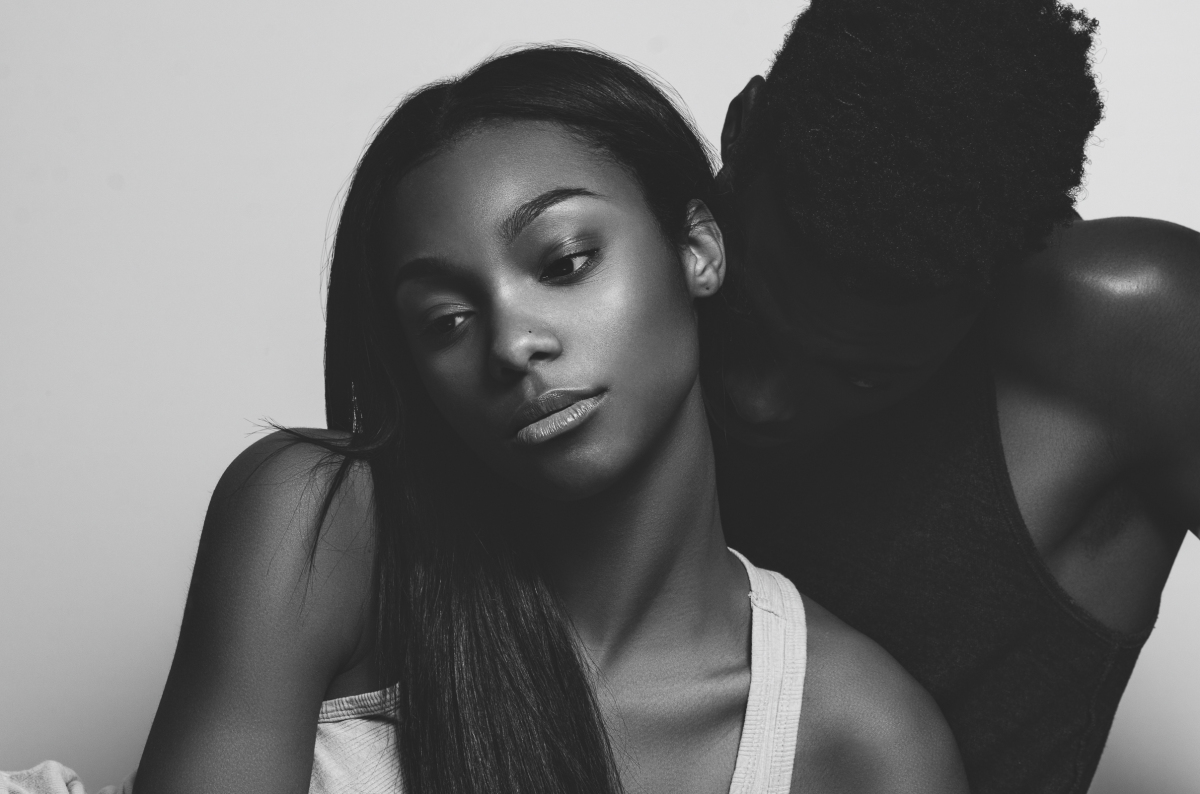
Borrowed Time #6
G: That is a beautiful and heartbreaking scenario. I think the moral dilemma shines through these photos. There is obviously chemistry between the two models but I do like how bare it is. There is no sense of “putting on” or performance. It looks like two people spending intimate time with one another. Are you allowing them to move entirely on their own as models or do you feed them a type of script such as “Ok now this is what is happening in this next frame”? How hands on or hands off do you like to be?
A: I’m pretty hands off, in general. I’ll pose a subject to the extent that it’s necessary, but I like to stay out of the way. For “Borrowed,” there were three or four lighting setups that I wanted to do. At each setup, I would feed them a new part of the scenario. It got awkward, at times. They were great about it, though. Once they saw the story, I think they got it.
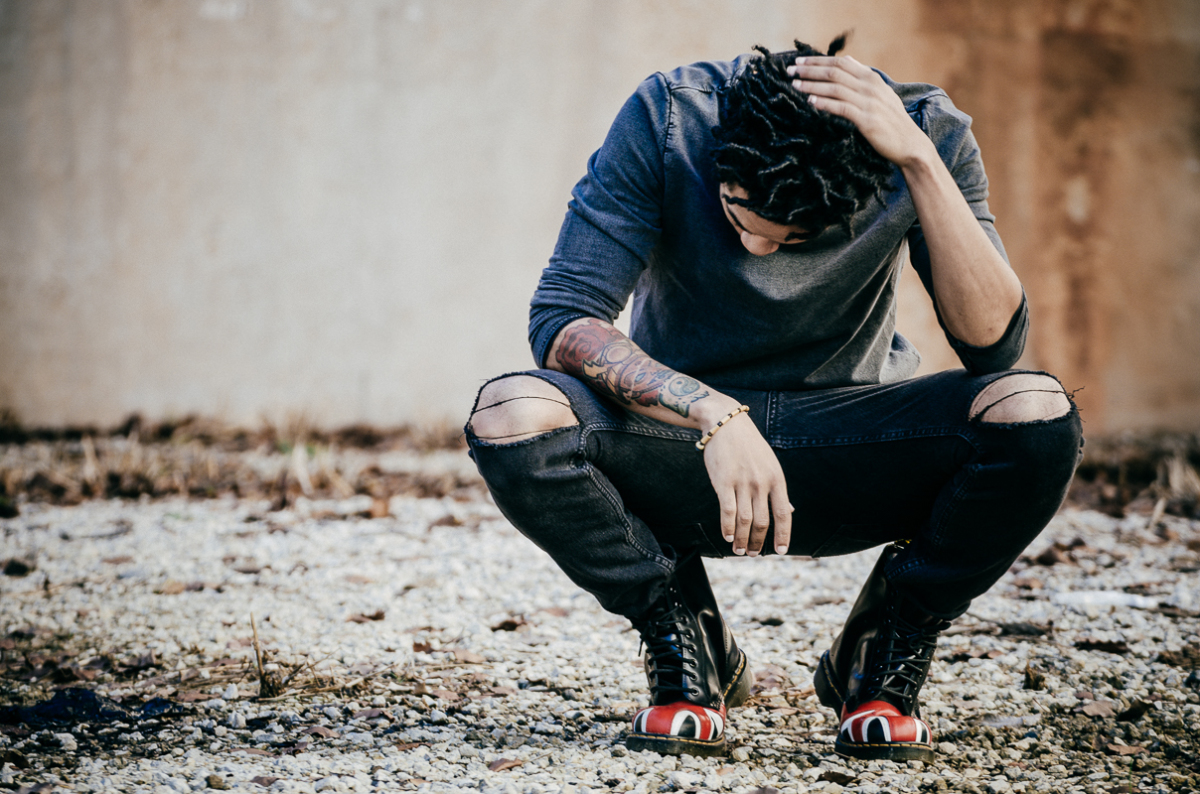
Phill
G: In the “iD Sessions” series, I see you doing so much of the work you spoke about earlier in the interview concerning making space for people of color and for people to be seen as humans and not only as models. This is an important group of photos where you become both artist and archivist, meaning using your photos to bring attention to other artists for the sake of the art itself. You are networking with these photos, connecting the dots so to speak, between documenting, publicizing, and creating dope photos. It’s impressive.
Please talk about what this series means to you and share a little about this particular artist, Phill.
A: I recently discovered that I love to shoot artists, more than anything. I was a musician. My minor in undergrad was audio production. I love concerts. I just love music. Photographing musicians is the best of both worlds.
This series–that will end up becoming a body of work–is the beginning of a shift for me. I want to get to a place where artist portraits dominate my work. I select subjects based in Metro-Atlanta. I want to sort of create a snapshot of what’s going on here, right now. That’s right now today and right now five years from now. There are artists and kids who (I feel) could end up being taste-makers. I license the photos to the subjects to use however they want for free. We’re helping each other.
I first saw Phill in my Tumblr timeline. He’s from Virginia but moved here to record, after graduating college, last summer. Ironically enough, he records less than a mile from where I shoot. You’d never know it by looking at his photos, but he’s a very outgoing, positive guy.
I try not to listen to the artist’s music before we shoot so that I don’t have any preconceived ideas when the arrive. What I publish is usually my interpretation of who the artist is. Despite how open he was during the session, Phill came off as pretty mysterious. That’s why his face isn’t shown in the portrait.
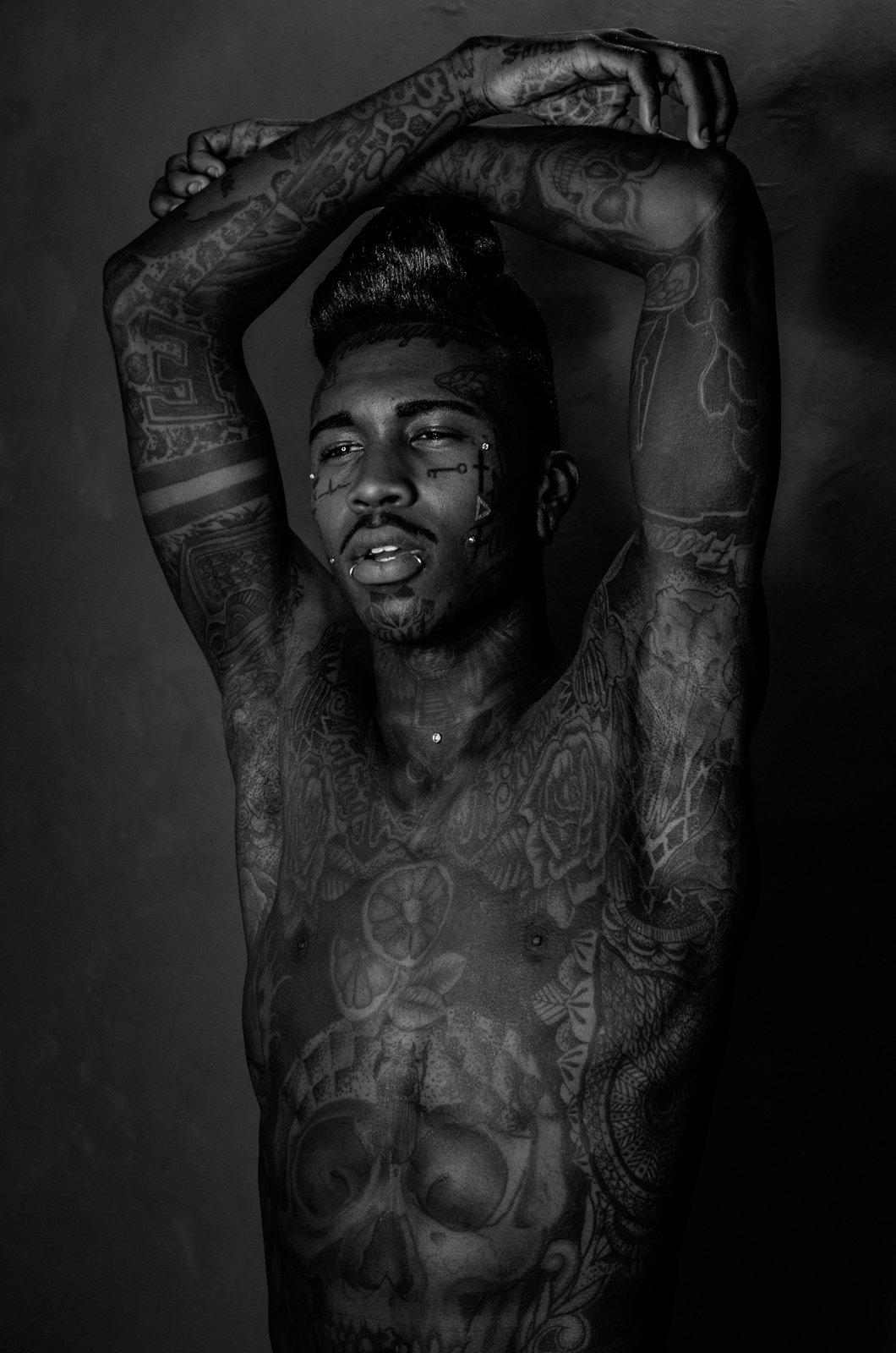
Yves
G: So this is certainly a community project, a way to truly make for art a space that creates more art and more community. We need so much more of that and I am thrilled that you are taking the initiative to do this. In many ways you are a taste-maker.
How important is community to artistry? Is it something we need more of or…? It seems as though Atlanta is feeding your creative energy very well. Also, Yves has a dope look. Please tell us more about what he does.
A: It’s a tricky thing. Artists constantly struggle to get others to see value in their art. I think we need more mutual appreciation. That would go a long way. I do not want to perpetuate the notion that what I’m creating with these subjects is worthless. So I’m pretty clear about the licensing aspect and that there’s usually a cost associated with the type of work we’re doing that day. I don’t want it to feel like a handout.
The “exchange” that takes place with the “iD Sessions” is certainly a way for me to reach out to and work with other artists in my community. I’m the furthest thing from social, so there’s very little chance I’d interface with these people in their typical setting. This project is helping to develop and strengthen my point of view. It’s invaluable.
Yves is a New York native who’s in school at Savannah College of Art and Design in Savannah, GA. He’s studying creative writing and, I believe, wants to be a playwright. His session was arranged by a hair stylist I collaborate with frequently. Yves got his first tattoo at the age of 15. There’s a meaning behind every one of them. I was too ashamed to ask the typical “how many?” question, but there are dozens. He wears his story for everyone to see and isn’t ashamed to tell it to anyone who asks.
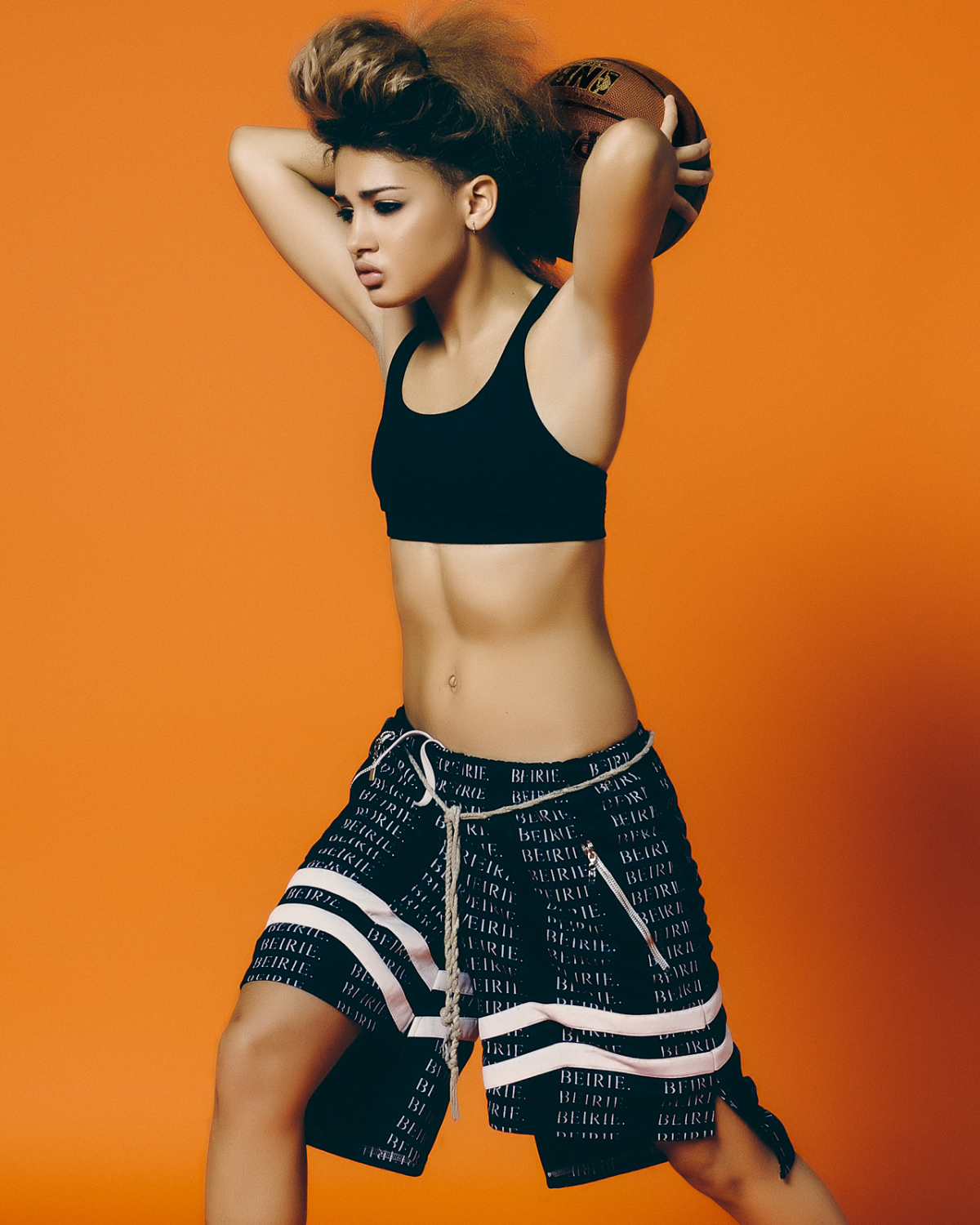
Beija
G: You mention value. How much of this is entrepreneurial? Do you see yourself as a businessman in any of this? So often artists do not get paid for what they do, the very important work of creating culture. Do you see yourself as someone who is running a business as well as making art? Also, who is this person in this photo with the amazing hair and form? I like how powerful and graceful she looks.
A: Thank you so much for asking this question! I wasn’t sure how to frame it earlier. I’m investing in my future, in a lot of ways. Word of mouth creates paid gigs for me when friends (and sometimes fans/followers) of the artists see the photos. I consider the potential reach when I’m selecting subjects. Thats the businessman side of it. I’m definitely running a business. I’m lucky that I get to be selective about commissions I take on. This way there’s a pretty equal balance of work and exploration.
That young woman is Beija. She is the younger sister of a very good friend of mine. We’d been friends for about 12 years before he introduced us. She doesn’t know it, but she was my unofficial muse for a while. We shot together a few times.
She runs a clothing line with a friend and plays college basketball. She designed the look she’s wearing in this photo. I ’m not sure where exactly she’ll end up in life, but she just has a presence that is undeniable. She is going to do great things.
This is great example of an exchange that works out well for all parties involved. I just love working with her, so my door is open whenever she calls. That photograph got a lot of attention and landed me a ton of jobs this year.
G: I want to thank you for dedicating so much of your time to doing this interview with us at Glappitnova. If people are interested in learning more about your work or want to commission you for portraits, where can they reach you?
A: Thank you for having me. I appreciate your interest in the work. It’s the coolest thing. People can visit my website www.alexdrogers.com to see more of my work and to inquire about comissioning portaits. There are links to my social media on the site, as well.
Glappitnova unites influencers and talent from different industries through storytelling, performances, classes, and events for one crazy 8 day experience in Chicago.The opinions expressed here by Glappitnova.com contributors are their own, not those of Glappitnova.com.
comments
 AI Will Impact 400 Million Jobs by 2030 So Let’s Prepare
AI Will Impact 400 Million Jobs by 2030 So Let’s Prepare
 From Redmoon to Newmoon Theater Announcing Alex Balestrieri on The Global Committee
From Redmoon to Newmoon Theater Announcing Alex Balestrieri on The Global Committee
 Announcing Wingsuiter and Curator Kody Madro on The Global Committee
Announcing Wingsuiter and Curator Kody Madro on The Global Committee
 Glappitnova 2.0
Glappitnova 2.0
 Announcing Creative and Engineer Josh Onwordi On The Global Committee
Announcing Creative and Engineer Josh Onwordi On The Global Committee
 Announcing Global Healthcare Executive Samantha Thaver on the Glappitnova Global Committee
Announcing Global Healthcare Executive Samantha Thaver on the Glappitnova Global Committee
 Announcing Illini Track Star Turned Entrepreneur Jonathan Wells On The Global Committee
Announcing Illini Track Star Turned Entrepreneur Jonathan Wells On The Global Committee
 Announcing Ella McCann On The Glappitnova Global Committee
Announcing Ella McCann On The Glappitnova Global Committee
 Announcing Cultural Executive Andrew Harris On The Global Committee
Announcing Cultural Executive Andrew Harris On The Global Committee
 Announcing Matt Carney Of Root Tulsa On The Glappitnova Committee
Announcing Matt Carney Of Root Tulsa On The Glappitnova Committee
 Announcing Jerica D. Wortham Tulsa On The Global Committee
Announcing Jerica D. Wortham Tulsa On The Global Committee
 Announcing Michael Grogan Tulsa On The Glappitnova Global Committee
Announcing Michael Grogan Tulsa On The Glappitnova Global Committee
 Community Development Tips For Millennial Audiences, Wanna Come?
Community Development Tips For Millennial Audiences, Wanna Come?
 The Advertising Industry Is Working Scared
The Advertising Industry Is Working Scared
 Announcing Our New Platform, Foonova
Announcing Our New Platform, Foonova
